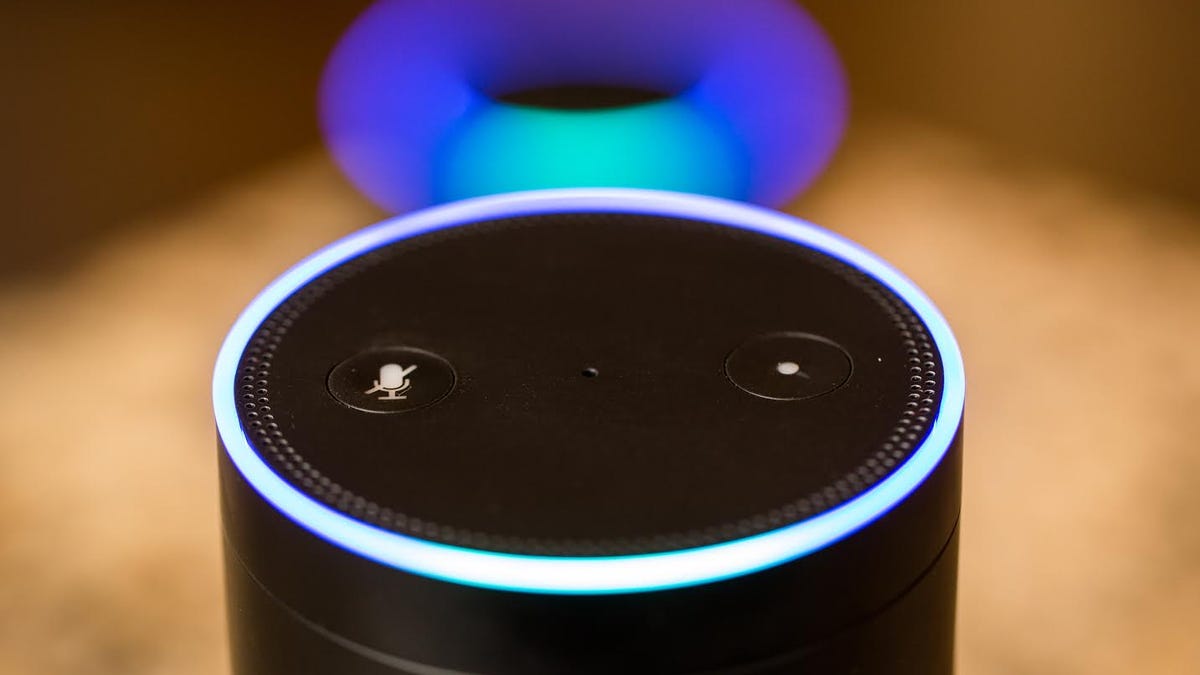How to set up multiroom playback across all of your Alexa devices
Want to sync up your Echo, Echo Dot and Echo Show smart speakers to play music together in perfect harmony? Here's how.

Alexa has all sorts of tricks up her sleeve, but voice-activated playback of your favorite music has always been front and center. This week, Amazon doubled down on her ability to stream tunes by letting you group multiple Alexa speakers for simultaneous playback throughout your home.
You'll obviously need more than one Alexa speaker under your roof in order to try it out, but there are a couple of other points to keep in mind, as well. Here's what you need to know, and how to get started.
From left to right, the Amazon Echo, Tap and Dot. The Echo and Echo Dot both support multiroom audio -- but the Tap does not.
Only the Amazon Echo, Echo Dot and Echo Show are supported (sorry, Tap)
At launch, those three are the only kinds of Alexa devices you'll be able to group together. It's not at all surprising that the Alexa-powered Echo Look selfie cam got left out, given that it's barely a speaker at all. But the absence of the battery-powered Amazon Tap is a disappointment -- especially considering that the little puck doesn't support Alexa's calling and messaging feature, either.
Third-party Alexa speakers such as the Fabriq and Eufy Genie won't work, either -- at least not yet. Amazon has a set of software tools planned to help outside developers bring their Alexa devices into synchronicity, but they won't be arriving until early 2018. Once they do, you'll have a lot more options for expanding your setup, but for now, it's Echo, Echo Dot, Echo Show or bust.
Amazon recommends renaming each of your devices after the room in which they're located. Here, I changed "Ry's Echo" to "Living Room."
You might want to rename your devices
One of the side benefits of multiroom audio support is that you can use one Echo device to start playback on another. All you need to do is tack the name of the target speaker onto the end of your command, like, "Alexa, play the Beatles in the kitchen."
Of course, you'll need to rename your kitchen's Echo Dot "Kitchen" in order for that to work. By default, Amazon uses your name to label devices, as in "Ry's Echo." That's fine at first, but less than ideal once you start adding multiple devices to your setup. "Alexa, play the Beatles on Ry's 3rd Echo Dot" just doesn't have the same ring to it.
Fortunately, changing the names of your devices is a cinch. Just go to the settings section of your Alexa app, select the device in question and give it a new name that'll work well with those kinds of commands. Naming each device after the room it's in seems like the best approach.
You'll need to group your devices
While you're there in the Alexa app, we can go ahead and knock out the next step: grouping your devices for simultaneous playback. To do so, head back to the settings section and scroll down until you see Multi-Room Music. Tap it, then scroll down and tap Create Group. The app will ask you which type of group you want to create -- tap Multi-Room Music.
From there, the app will ask you to choose a group name (it offers several suggestions, like Downstairs or Backyard) and choose which speakers you want to include in the group. Do so, then click Create Group to finish.
Some hiccups here. My default music service is Spotify, and Spotify doesn't support group playback yet. pic.twitter.com/Epoz6ZVS5n
— Ry Crist (@rycrist) August 29, 2017
Some caveats
The Alexa app won't let you add speakers to more than one group at a time.
At this point, you're all set to start blasting music across multiple Alexa devices at your next house party, but there are still a couple of things you'll want to be aware of.
First, as of now, Alexa's multiroom audio only supports Amazon Music, iHeartRadio, TuneIn and Pandora. Spotify and SiriusXM aren't supported yet, though Amazon tells us that both are in the works. If, like me, you're a Spotify user, you've got two fixes here. You can either switch your default music service to Amazon or Pandora (just tap Music Services in the Alexa app's settings section), or you can tell Alexa to use one of those supported services when you give your voice command, as in, "Alexa, play jazz music on Amazon Music downstairs." It's clunky, but it works.
Another kink to keep in mind is that each of your Alexa devices can only belong to one group. If you try to add those devices to a second group, you'll find them grayed out and inaccessible. I'm not sure why Amazon did this, but I expect it will change pretty soon. Plenty of users will want to create, for instance, both a Downstairs group and an Everywhere group. And it's worth noting that you can already add Alexa-supported smart home devices to multiple groups.
Finally, some users have reported that multiroom audio won't work with Echo Dots that are connected to outside speakers via Bluetooth. I reached out to Amazon and confirmed it -- those Bluetooth connections aren't compatible with multiroom audio.
As Amazon puts it: "Bluetooth is disabled during audio playback to ensure the best experience. Bluetooth connection will resume when audio playback has stopped."
Direct, wired connections to outside speakers still work, but still, the lack of Bluetooth support is potentially pretty annoying. Here's hoping Amazon will find a fix in the near future.

